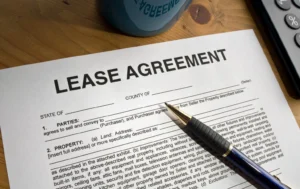Government backed leases represent a revolutionary approach to securing stable accommodation for children’s residential care homes across the UK. Moreover, these innovative arrangements provide local authorities with reliable housing solutions whilst offering property investors guaranteed rental income streams.
Understanding Government Backed Leases in Care Home Context
Government backed leases establish secure tenancy agreements between property owners and local authorities. Consequently, these arrangements ensure consistent rental payments regardless of occupancy fluctuations. Furthermore, local councils gain access to suitable properties for vulnerable children requiring residential care services.
These lease structures typically span 10-25 years, providing long-term stability for all parties involved. Additionally, government backing eliminates traditional rental risks associated with property investment. Therefore, landlords receive guaranteed monthly payments whilst councils secure essential accommodation for children in care.
The Critical Need for Stable Children’s Residential Care
Currently, the UK faces a severe shortage of appropriate residential care facilities for children. Subsequently, many local authorities struggle to place vulnerable young people in suitable accommodation. Furthermore, temporary placements often disrupt children’s education and emotional development.
Government backed leases address these challenges by creating sustainable housing solutions. Moreover, stable accommodation enables care providers to deliver consistent, high-quality services. Consequently, children benefit from continuity in their living arrangements and support networks.
Recent statistics reveal that over 83,000 children live in care across England and Wales. Meanwhile, residential care home availability continues declining due to inadequate funding models. Therefore, innovative financing solutions like government backed leases become increasingly vital.
How Government Backed Leases Operate
Initially, local authorities identify specific accommodation requirements for children’s residential care. Subsequently, property owners enter binding lease agreements with guaranteed rental terms. Furthermore, these contracts typically include maintenance responsibilities and service standards.
The government backing ensures rental payments continue regardless of occupancy levels. Additionally, councils benefit from predictable accommodation costs over extended periods. Meanwhile, property investors enjoy steady returns without traditional letting risks.
Lease agreements often include break clauses and renewal options. Moreover, rental increases typically align with retail price index adjustments. Consequently, both parties maintain financial protection against inflation and market fluctuations.
Benefits for Property Investors
Government backed leases offer compelling advantages for property investors seeking stable returns. Primarily, guaranteed rental income eliminates void periods and rental arrears concerns. Furthermore, long-term contracts provide predictable cash flow for investment planning.
These arrangements typically yield higher returns than traditional buy-to-let investments. Additionally, government backing significantly reduces investment risks compared to private rentals. Moreover, investors avoid property management responsibilities whilst maintaining ownership benefits.
Capital appreciation continues throughout lease periods, enhancing overall investment returns. Subsequently, investors can refinance properties based on improved rental yields. Therefore, government backed leases create attractive opportunities for portfolio expansion.

Advantages for Local Authorities
Local councils gain substantial benefits through government backed lease arrangements. Primarily, these contracts provide cost-effective accommodation solutions for vulnerable children. Furthermore, long-term agreements enable better budget planning and resource allocation.
Government backed leases eliminate competitive rental market pressures. Consequently, councils secure appropriate properties at predetermined rates. Additionally, these arrangements ensure accommodation availability when urgent placements arise.
Quality standards remain consistently high through contractual obligations. Moreover, purpose-built or adapted properties better meet children’s specific needs. Therefore, local authorities can focus resources on care delivery rather than property management.
Quality Standards and Regulatory Compliance
Government backed leases incorporate stringent quality requirements for children’s residential care accommodation. Subsequently, properties must meet Ofsted standards and local authority specifications. Furthermore, regular inspections ensure ongoing compliance with safety and welfare regulations.
These arrangements typically include maintenance obligations and improvement schedules. Additionally, properties require appropriate safety features, accessibility provisions, and therapeutic environments. Moreover, lease terms often specify staffing accommodation and administrative facilities.
Compliance monitoring involves multiple agencies including Ofsted, local safeguarding boards, and health authorities. Consequently, government backed leases maintain high standards whilst providing stable accommodation solutions.
Financial Sustainability and Value for Money
Government backed leases demonstrate strong value for money compared to alternative accommodation options. Primarily, these arrangements reduce long-term costs through predictable rental commitments. Furthermore, efficiency gains emerge from streamlined property management processes.
Traditional spot-purchasing of care accommodation often involves premium pricing. Meanwhile, government backed leases secure competitive rates through long-term commitments. Additionally, bulk procurement approaches can reduce overall accommodation costs.
These financial benefits enable local authorities to support more children within existing budgets. Subsequently, improved resource allocation enhances overall care quality and outcomes. Therefore, government backed leases contribute to more effective public spending.
Prem Property’s Guaranteed Rent Solution
Prem Property specialises in government backed lease arrangements for children’s residential care accommodation. Moreover, their guaranteed rent solution eliminates investment risks whilst providing local authorities with suitable properties. Furthermore, Prem Property’s expertise ensures compliance with regulatory requirements and quality standards.
Their comprehensive service includes property identification, lease negotiation, and ongoing management support. Additionally, Prem Property maintains relationships with local authorities across Midlands and Greater London. Consequently, investors benefit from established procurement channels and proven track records.
Prem Property’s guaranteed rent solution typically offers 10-20% higher yields than traditional buy-to-let investments. Meanwhile, their government backing eliminates void periods and rental collection concerns. Therefore, property investors gain peace of mind alongside attractive financial returns.
Implementation Challenges and Solutions
Implementing government backed leases requires careful planning and stakeholder coordination. Initially, local authorities must identify suitable properties and develop procurement strategies. Subsequently, legal frameworks need establishment to protect all parties’ interests.
Property adaptation often requires significant investment to meet care home standards. Furthermore, planning permissions and regulatory approvals can create implementation delays. Additionally, financing arrangements need structuring to support initial capital requirements.
Successful implementation relies on collaborative partnerships between councils, investors, and care providers. Moreover, clear communication channels ensure smooth operational transitions. Consequently, dedicated project management becomes essential for successful government backed lease programmes.
Future Outlook and Market Development
Government backed leases continue expanding as local authorities recognise their benefits for children’s residential care. Furthermore, increasing demand for stable accommodation drives market growth. Subsequently, more property investors explore these guaranteed income opportunities.
Policy developments support wider adoption of innovative financing models. Additionally, government initiatives promote private sector involvement in public service delivery. Moreover, successful pilot programmes demonstrate measurable benefits for vulnerable children.
Market maturation will likely introduce standardised lease terms and procurement processes. Consequently, transaction costs should reduce whilst accessibility improves for smaller investors. Therefore, government backed leases represent an evolving solution for children’s care accommodation challenges.
Technology Integration and Modern Care Solutions
Modern government backed leases increasingly incorporate smart building technologies enhancing care delivery and operational efficiency. Initially, integrated systems monitor energy consumption, security, and environmental conditions automatically. Furthermore, these technologies provide real-time data supporting better decision-making processes.
Digital communication platforms connect care homes with local authorities, healthcare providers, and educational institutions. Moreover, electronic record-keeping systems ensure comprehensive documentation whilst maintaining data protection compliance. Subsequently, technology integration improves outcomes whilst reducing administrative burdens.
Smart home features support children’s independence development through controlled environment settings. Additionally, assistive technologies help young people with disabilities or additional needs. Consequently, purpose-built properties incorporating modern technologies deliver superior care outcomes compared to traditional accommodation options.
Regional Market Variations and Opportunities
Government backed lease opportunities vary significantly across different UK regions based on local demand and property market conditions. Primarily, urban areas with high care populations offer numerous investment possibilities. Furthermore, rural locations often provide better value propositions despite lower property volumes.
London and South East markets typically yield higher rental returns reflecting elevated property values and care costs. Meanwhile, Northern regions and Wales present attractive opportunities for investors seeking lower entry costs. Additionally, Scotland’s distinct legal framework creates unique market dynamics requiring specialised expertise.

Environmental Sustainability and Energy Efficiency Standards
Government backed leases increasingly emphasise environmental sustainability and energy efficiency requirements within children’s residential care properties. Initially, local authorities specify minimum energy performance ratings and carbon reduction targets. Furthermore, these standards align with UK government net-zero commitments by 2050.
Modern care homes incorporate renewable energy systems including solar panels, heat pumps, and smart heating controls. Moreover, improved insulation and double glazing reduce operational costs whilst enhancing resident comfort. Subsequently, lower utility bills benefit both landlords and local authority budgets.
Green building certifications such as BREEAM or Passivhaus standards often attract premium rental rates within government backed lease agreements. Additionally, sustainable properties demonstrate corporate social responsibility whilst supporting climate change objectives. Consequently, environmentally conscious investors gain competitive advantages in procurement processes.
Energy-efficient properties typically achieve 15-25% lower running costs compared to traditional buildings. Meanwhile, government grants and incentives support initial investment in sustainable technologies. Therefore, environmental considerations create long-term value whilst supporting vulnerable children through improved living conditions.
Specialist Property Types and Adaptations
Government backed leases encompass various specialist property types designed for different care needs and age groups. Primarily, secure children’s homes require enhanced security features, reinforced structures, and specialised access controls. Furthermore, these properties incorporate therapeutic spaces supporting behavioural intervention programmes.
Mother and baby units combine residential care with independent living skills development areas. Moreover, these properties include nursery facilities, educational spaces, and family support rooms. Subsequently, purpose-built accommodation enhances outcomes for young parents and their children.
Disabled children’s homes require extensive adaptations including wheelchair accessibility, hoisting systems, and sensory equipment. Additionally, these properties incorporate assistive technologies and medical equipment storage areas. Consequently, specialist adaptations command premium rental rates reflecting higher development costs.
Emergency accommodation properties provide immediate placement solutions during crisis situations. Meanwhile, step-down facilities support transition planning for young people approaching independence. Therefore, diverse property portfolios enable comprehensive service delivery across the care spectrum.
Financial Modelling and Investment Analysis
Successful government backed lease investments require sophisticated financial modelling incorporating multiple variables and scenario planning. Initially, investors analyse local authority procurement patterns, demographic trends, and care placement demands. Furthermore, detailed feasibility studies examine property acquisition costs, adaptation requirements, and projected returns.
Rental yield calculations consider guaranteed income streams alongside potential rental increases over lease periods. Moreover, capital appreciation forecasts incorporate local property market trends and development pipeline impacts. Subsequently, comprehensive financial models enable informed investment decisions and risk assessment.
Tax implications significantly influence investment returns through corporation tax, capital gains, and VAT considerations. Additionally, depreciation allowances and capital expenditure reliefs reduce overall tax liabilities. Consequently, specialist tax advice becomes essential for optimising investment structures and maximising net returns.
Exit strategies require careful planning considering lease terms, property conditions, and market circumstances. Meanwhile, refinancing opportunities enable capital extraction whilst maintaining investment positions. Therefore, flexible investment structures accommodate changing market conditions and investor requirements.
Partnership Development and Stakeholder Engagement
Successful government backed lease programmes depend upon strong partnerships between local authorities, property investors, and care service providers. Initially, collaborative planning ensures accommodation solutions align with strategic care objectives and quality standards. Furthermore, regular stakeholder meetings maintain communication and address emerging challenges promptly.
Local authority procurement teams require confidence in investor capabilities, financial stability, and commitment to quality outcomes. Moreover, established track records and professional references enhance credibility during tender processes. Subsequently, long-term relationships create competitive advantages and preferred supplier status.
Care provider partnerships enable investors to understand operational requirements and service delivery models. Additionally, integrated approaches combine accommodation with support services creating comprehensive solutions. Consequently, collaborative partnerships deliver superior outcomes whilst generating sustainable returns for all stakeholders involved.
Securing Your Investment Future with Government Backed Solutions
Government backed leases transform how residential care homes for children secure accommodation. These innovative arrangements provide stability for vulnerable young people whilst offering investors guaranteed returns. Furthermore, local authorities benefit from predictable costs and improved service delivery.
As demand for children’s residential care continues growing, government backed leases offer sustainable solutions. Moreover, companies like Prem Property facilitate these arrangements through expert guaranteed rent solutions. Consequently, this collaborative approach ensures better outcomes for children whilst supporting property investment objectives.

